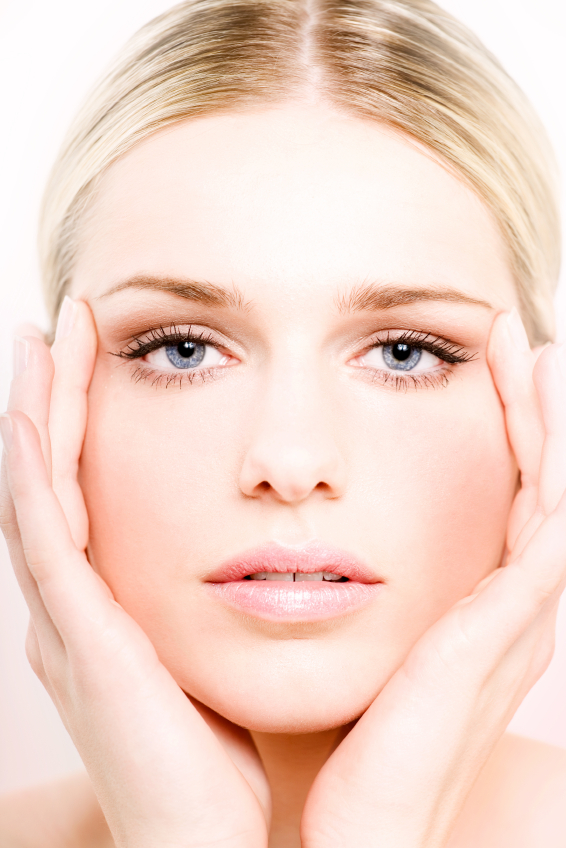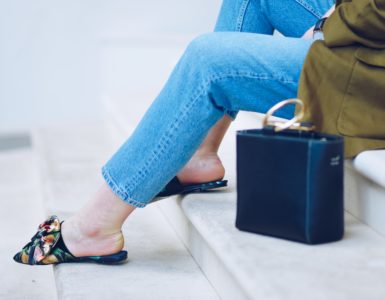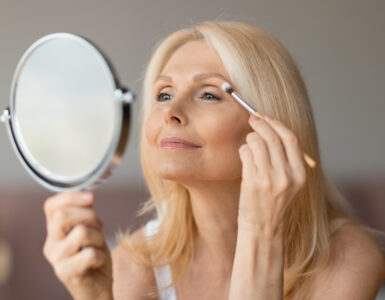Dr. Robert Young, one of the state’s leading dermatologists and a member of the American Academy of Dermatology, reveals some of the best non-surgical wrinkle releasers on the market.
First of all, let me make it clear that I have no conflict of interest as I share with you some of my personal favorites. In a very informal and personal way, I simply wish to share with you some basic principles regarding skin care, in general.
It is important to realize that our skin is as much an organ of our body as any other. This means two things. First, it ages as we do and so there will be no magic switch to reverse years of maturity. It will take months and even years if we want to try to reverse some of this aging. I call it “aging gracefully.”
Secondly, one thing we often overlook is that the “aging” of our skin is, in fact, secondary to the effects on it from the outside environment. In our case, living in the Rocky Mountains, this includes (but is not necessarily limited to) the effects of sun and a dry climate.
When I am asked (quite often as a matter of fact!) how to reverse wrinkles, I always try to make sure we all understand that protection is first and foremost the most important aspect of any program. You wouldn’t ask your next door neighbor to keep an eye on your home while you were gone for a week and then leave the front door of the house wide open, would you?
Similarly, if someone is going to embark on a program to reverse years of wrinkling (read sun damage) it just doesn’t make any sense to not begin right now to realize that much, and sometimes most, of what we call aging is really mainly sun damage. The damaging and accumulating effects of ultraviolet damage from the sun on our skin have been scientifically documented over and over again in quite some detail. You can’t do anything about what might have happened 20 or 30 years ago, but it makes no sense to spend time and money trying to reverse those effects without immediately beginning to protect from such permanent damage in the future.
By the way; if you want to receive a quick and easy personal lesson about what environment (vs. aging) does to your skin, just look at your own forearm (or better yet, your parents’ or grandparents’) and compare the external, or outside, portion against the internal/medial, or inside, portion and see for yourself the differences. Remember, that the skin on both sides of your arm is the same age.
Important Factors:
Moisturization
As skin cells age they lose their relative ability to hold onto moisture and this clearly contributes to what we see as wrinkles. Clearly, some areas such as the thin skin below our eyes are much more prone to this than others but the principle is still the same.
Speaking of protection, make sure that routine things that you do in your own lifestyle does not contribute to damaging your skin. For instance, long, hot showers with a harsh soap will work against your natural body cell mechanisms which Mother Nature has put in place to have your skin cells hold onto moisture.
Cooler, shorter showers with a non-soap cleanser such as Dove, Tone, Basis, Neutrogena, Olay, Cetaphil, Purpose, and others are much better for your skin. Liquid cleansers tend to be gentler and less drying than bar products in most cases. Make sure you do not over wash by either being too harsh or too often with your bathing.
Adding a body moisturizer to your washing regimen may be helpful. Using something line “Rain Bath” by Neutrogena, or “moisturinse” Olay (and there are many other similar and excellent products) to help trap the moisture against our skin is beneficial. Just be careful as any of these can and often do make the bath tub or shower slippery and you wouldn’t want to exchange less wrinkles for a broken hip!
Immediately after exiting the shower and lightly drying off is the perfect time to use a moisturizer (both to moisturize the skin and to help it with its normal barrier function as intended by Mother Nature). A little bit goes a long way and I have found that we tend to overdo it as a general rule (true of life in general unfortunately.)
If over-the-counter (hereafter OTC) products such as Cetaphil, Dove, CeraVe are not quite enough for you, try “AmLactin” or “U-Lactin” These are not as cosmetically elegant but may be more clinically effective (if these sting it usually lasts only a few minutes and for only the first few days until the skin has reformed its natural barrier function.)
As a general rule, ointments (yes, like “Vaseline Petroleum Jelly”) are more effective than creams, which in turn are more effective than lotions. I realize that lotions are easier to apply and more acceptable to most of us but as usual life is full of trade offs. Lotions may work just fine for some people but need to be re-applied more frequently while creams or ointments may require a mere once or twice a day application. Also, both creams and lotions (especially lotions) tend to have alcohol, preservatives, and fragrances which can be part of an individual’s problem both in the short and long term.
One of the newer, and in my opinion best, OTC moisturizers to come onto the market is “New Cetaphil Daily Advance Ultra Hydrating” which comes in lotion and cream. “CeraVe” in both lotion and cream is also excellent and easy to find as an OTC product. Also, since oatmeal has been used for literally thousands of years as a natural product, “Aveeno” is a company which uses oatmeal in their products and their new “Eczema Care Moisturizing Cream” is a superior product. “Eucerin” is a line known to many and they have new and improving products coming regularly. Unfortunately, the variety of their products is too long to list. There is virtually always just the right product for any given individual.
Each year more and more of the above products include sunscreens, anti-oxidants, and other excellent improvements. Your dermatologist can be an exceptional source for experience from themselves, their staff, and many other patients with multiple skin types. Free samples can also save a lot of time and frustration as each of us try to find the perfect product.
Protection (Sunscreen)
Broad-spectrum, re-application, enough volume, sweat-proof, and good quality are the keys here.
The sunscreen with the broadest spectrum today is “Revitalift UV,” a new daily moisturizing cream with sunscreen by L’Oreal. L’Oreal has a patent on the active ingredient which is “Encamsule” or “Mexoryl SX.” My second favorite is “Ultra Sheer” by Neutrogena which comes in various SPF strengths, lotions, creams, a very elegant spray and contains the active ingredient “Helioplex”. When choosing sunscreen “sprays” you must be careful as some are very light and therefore perfect for that bald spot on the top of my (I mean your) head, and others are more like light lotions in a spray bottle.
My third favorite sunscreen is “All Day” by Sea & Ski, which is a foam and has exceptional staying power as far as “sweat-proof/water-proof” is concerned. If you can’t find it in the stores either call and ask them to carry it or call your local dermatologist as they might be able to help you get a hold of some.
Many other good sunscreens are out there and more are coming out every year. Just make sure it covers both UVA and UVB, is sweat-proof/water-proof, is from a brand-name company (stay away from the “No Brand” and generics as per “Consumer Reports” tests), put enough on (a 2 oz. shot glass is a good estimation of what it would take to cover the average person), and make sure it is not expired as they lose effectiveness/concentration over time.
Wrinkle Reversal
First, it is important to know that no matter what advertisement or infomercial you might have seen, nothing has ever been shown to even come close to prescription-dose retinoic acid. Most of us know it by the term “Retin-A” but there is now a plethora of competitors which have dramatically improved on the original product which first made its debut some thirty or more years ago.
In fact, the original company itself has made a better mouse trap and “Retin-A Micro” is not only gentler, but it penetrates better and is much less irritating. One thing I love about it is that it now comes in a metered pump so that you can know exactly how much you are putting on. Insurance will hardly ever pay for it if you are an adult, but fortunately the company has a rebate to the patient, even if you can overcome the “sticker-shock” of the original price at the pharmacy (and by the way, do NOT be afraid to call around for “out of pocket” price as the price between pharmacies can vary widely). If you use no more than one pump each night (an average amount) it should cost you no more than around $2.50/month. With what we know scientifically about how this medicine works this is a bargain.
Other competitors I like (all Rx) are Differin, Atralin, Ziana, Tazorac, and of course several others. Most come in either a cream or a gel and have lower and higher concentrations of strength. You will usually need to slowly acclimatize your skin to this active ingredient so at first you will probably begin by only using it once every two or three days. It is strong enough that if you begin by using it even less often than this it will still be effective and over time your skin will become accustomed to it and the frequency of use will slowly increase. Since they are all prescription products, your dermatologist will be the best one to counsel you as to what product might be best for you.
People don’t usually like the generic retinoic-acids. Even though the pharmacist may tell you that the active ingredient is identical, the vehicle may not be. What this means to you is that it might not penetrate enough to do as much good. It also may penetrate too fast and cause too many side effects. There are many variables, but to be honest with you, I have never had a patient doing back flips about the generics.
The OTC products that say they are like “Retin-A” are, in fact, retinoids that generally have retinol as their active ingredient. These are effective and are often a good place for many people to start but the retinol molecule (assuming it penetrates properly) will give you at most approximately 20% the strength of the prescription retinoic acid active ingredient.
Many people either cannot or do not want to go right to the above noted prescription products. For those there is a variety of what are generally called “cosmeceuticals” or “neutraceuticals” which are generally sold only through a physician’s office. Your dermatologist may be the best person to ask about this class of products. Everyone has their favorites. Some dermatologists carry many different brands and others carry none at all. Some have self-labeled products which they may or may not have taken an active role in developing.
When I first entered the field of dermatology some 18 years ago I became aware of the controversy within the specialty as to whether or not it was even ethical for a dermatologist to sell such products directly out of their office. As I studied the issues involved and learned that most of (if not all) such products were stronger and less expensive than what people were currently buying directly over the cosmetic counters, it began to seem like a “no brainer” to me.
Trust me; there is no shortage of said products for a dermatologist to choose from. It took me years of research to discover a very few products that I felt were of high enough quality and strength to be offered in my professional office. Even with this said, I only carry a very few products that I feel occupy a niche that my patients can’t find OTC.
I have decided to carry the “Kinerase”, “MD Forte`-Prevage”, and “Estion” lines. These are all product lines that have strong enough active ingredients that they are only sold through doctors’ offices and many have a money-back guarantee if for some reason they don’t agree with the patient. I have found these products to be stronger than anything sold over the counter and yet much more gentle than the prescription strength retinoic acid type products. These product lines include sunscreens, moisturizers, masques, cleansers, and some of the most popular items target the thin wrinkles we all develop under the eyes.
The OTC options of anti-oxidants are almost endless and increase every year. Most of these are a variety on a theme and involve short-chain acids which can penetrate down into the dermal layer and both act as an osmotic pull of moisture into the skin. At the same time, they can stimulate the production of new collagen which can give the face a smoother, tighter appearance.
We are learning more and more about these products each year. Unfortunately, it is a very loosely regulated industry so it is definitely a “buyers beware” market. Many of the active ingredients are natural which obviously has certain panache when it comes to marketing. I just remind my patients that both poison oak/ivy and cyanide are also both “natural”.
When it comes to penetration, coloring, effectiveness, irritability, stability, and cost, you can see that there are many things to consider when someone is evaluating a product scientifically. Marketing can be slick and of course very influencing so as you hear, see, and learn about a “new and better” anti-oxidant or growth factor, or whatever, in what might be a new product, keep in mind that the terms “dermatologist tested”, “clinically proven”, “dermatologist recommended” are used so loosely that they are for all intents and purposes useless. Just because one natural anti-oxidant worked better in the laboratory than another does not mean that it will work at all when it comes to what you want it to do.
Several OTC anti-oxidant/moisturizers that I have been impressed with are “Regenerist micro-sculpting cream” by Olay, “Definity” by Olay, an “Healthy Skin” by Neutrogena. You may or may not appreciate my favorites for one reason or another. I learned long ago not to tell a patient that “oh this one is the best!” In this group particularly, it is sort of like picking out a shirt; you want to make sure that you trust the maker/manufacturer and that it fits you. In this respect you’ll have to let your skin tell you what it likes the best.
As you might imagine, there are many more details which could be discussed. Still, I hope I have helped you understand some of the principles involved in choosing for yourself the best non-surgical solutions for “wrinkle releasers”.















Add comment